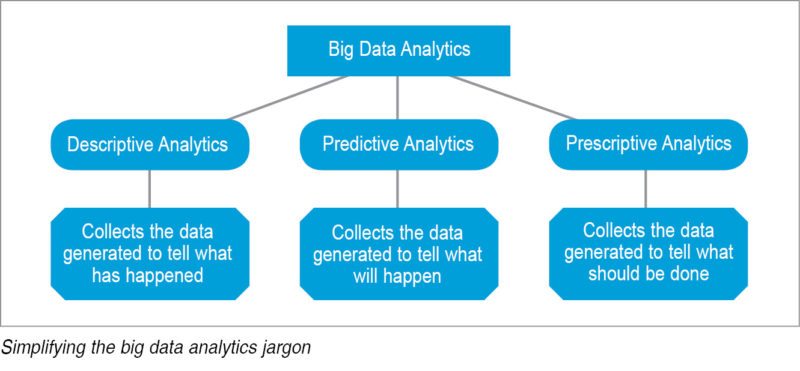- Big data analytics can prove fatal for your business if the algorithms entered are incorrect.
Big data analytics is the new fad in technology when it comes to growing your business efficiently. In June issue, we discussed how big data analytics can take your marketing efforts many notches up. And while most of you probably know the definition of the technology, you may not be aware of the technology itself.
Big data analytics is all about reading and analysing the data generated by various sources, understanding your requirements and using the right kind of data analytics to achieve the desired results.
However, applying big data analytics to your business is not always the next best move for your business. You may end up losing more money and, in worst case, closing down your business if you implement this technology recklessly. This is apart from the investment made in the technology. Here we list down three ways big data analytics can go wrong.
Collecting the wrong information
Let’s elaborate with an example. If we recall, the later half of the last decade was marred by flu and thus, seeing the perfect business opportunity, Google launched Google Flu Trends—a program that provides real-time monitoring of flu cases around the world, based on Google searches that match terms with flu-related activity.
Case Study: Google Flu Trends
Launched in 2008, Google Flu Trends (GFT) used big data analytics to gather data through search queries to predict flu outbreaks in around 25 countries. Algorithms were used to mine data (keywords like cold and fever were used to collect data), which was then compared with the frequency of flu outbreaks in a particular region to get the desired results.
Result
It could not predict H1N1 virus and in 2013, when the world recorded the highest number of flu cases, GTF grossly failed to predict the same, giving a result wrong by 140 per cent. The grossly incorrect results led to the search engine giant shutting down the GTF and losing out a huge amount of money.

What they did wrong
While Google did use big data analytics, it failed to understand that this technology can be fruitful only when right algorithms are in place, which was not the case with GTF. The results were based on search queries with common words like cold and fever, which eventually gave disastrous results.
Being lazy with big data results
Believing big data blindly can be dangerous for your business.
Case Study: Target Retail
Target Retail used big data analytics to understand its customers’ buying behaviour, shopping trends and personal information such as anniversaries, marital status and birthdays for target marketing.
Result
The father of a teenage girl stormed into a Target store to question the staff about sending pre- and post-natal offers to his daughter. Though he later found out that his teenage daughter was indeed pregnant, Target suffered a serious blow to its brand reputation as customers realised that their sensitive data was not kept private and instead shared with the marketing team.
What they did wrong
Those using the data did not bother to check the age bracket or verify whether the target customers were the right set. They ended up embarrassing their customers by disclosing sensitive data, thus paying a huge price for their error.

Using wrong algorithms
Big data analytics can prove fatal for your business if the algorithms entered are incorrect. This is exactly what happened with Amazon when one of its sellers used big data analytics in its products.
Case Study: Amazon/Solid Gold Bomb
In 2012, T-shirts with quotes like “Keep Calm and Rape A Lot” and “Keep Calm and Punch Her” were sold by e-tailer Amazon on its website.
Result
The brand had to suffer the wrath of its customers for selling such offensive products on its site. The supplier too apologised for the error and blamed it on the analytics.
What they didn’t know
Using wrong codes and not paying attention to their results can be hazardous for the brand.








